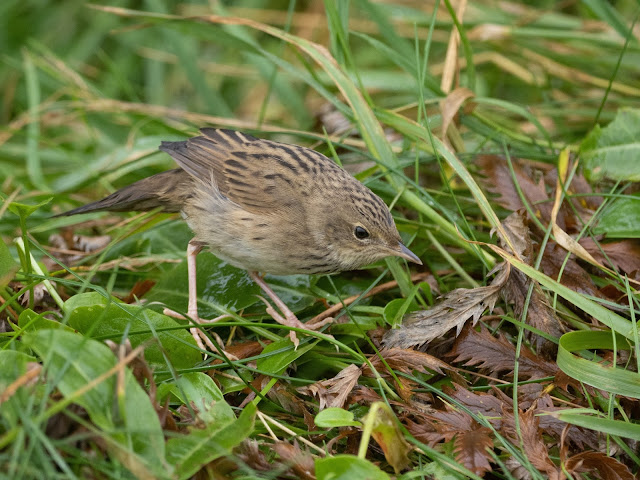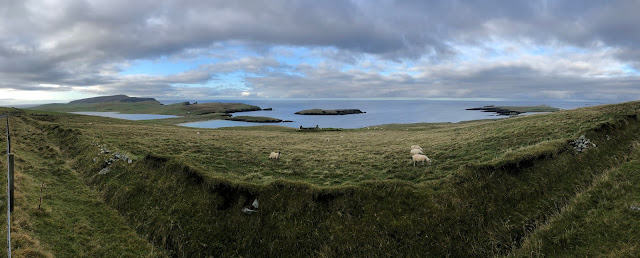In a stiff south-east wind with occasional showers, some heavy, I began the day birding the Sumburgh Head and Grutness area. There were good numbers of migrants with Goldcrest, Blackcap and Robin seemingly in every patch of cover. At Sumburgh Farm a superb, self found, Little Bunting got the pulse racing and raised the expectations. A Lesser Whitethroat was flushed from a weedy field where there was also a small flock of Brambling. At Grutness a brief flight view of yesterday's Great Grey Shrike was a Shetland tick.
Little Bunting - Sumburgh Farm, Shetland
Brambling - Sumburgh Farm, Shetland
Goldcrest - Sumburgh Farm, Shetland
I then headed up to the headland where the Lanceolated Warbler from yesterday was still showing superbly as it fed along the wall and Goldcrest flitted in the tussocks of Red Fescue. Checking my phone there was no news of anything of great significance which was somewhat surprising given the weather conditions and so I decided to head to Rerwick near to Bigton where a Radde's Warbler was found yesterday. I gave the bird around an hour to show in its chosen tiny clump of Willow and Sycamore but there was no sign - the bird has generally been very elusive.
Goldcrest - Sumburgh Head, Shetland
Lanceolated Warbler - Sumburgh Head, Shetland
Lanceolated Warbler - Sumburgh Head, Shetland
Lanceolated Warbler - Sumburgh Head, Shetland
Lanceolated Warbler - Sumburgh Head, Shetland
Lanceolated Warbler - Sumburgh Head, Shetland
I then found myself at a bit of a loose end, my camera's electronics seemed to have completely failed and so I fiddled with this a while scanning Loch of Spiggie to add a few water birds to my trip list. There were 38 Whooper Swan present and a passage of 246 Barnacle Goose moving south overhead.
Whooper Swan - Loch of Spiggie, Shetland
I then headed to Levenwick where I birded the area around the stores, the highlight here was a Jack Snipe at the mouth of the quarry. I then headed to Hoswick Burn and worked the bushes lining the burn, here the highlight was three Yellow-browed Warbler and a female (type) Redstart. News then broke of a Siberian Stonechat on the road between Cunningsburgh and Blett and so I headed here and got rather brief and distant views. The light was now closing in and I decided to head back to Lerwick to try and sort my camera out. The day had offered so much by, generally, had failed to deliver on a significant rariety. Maybe tomorrow.



















































